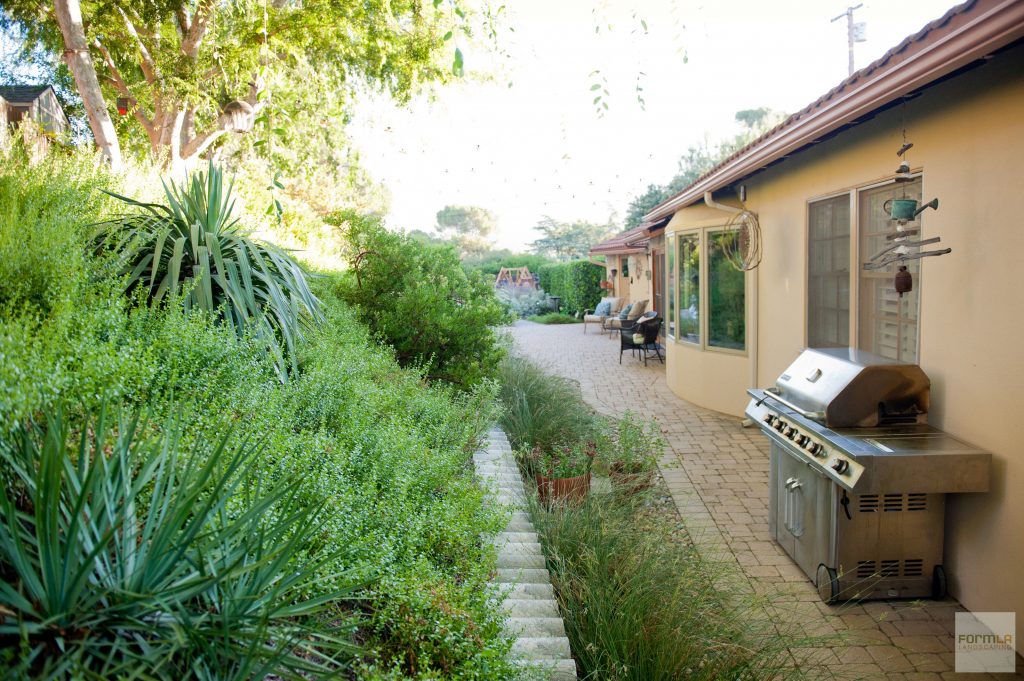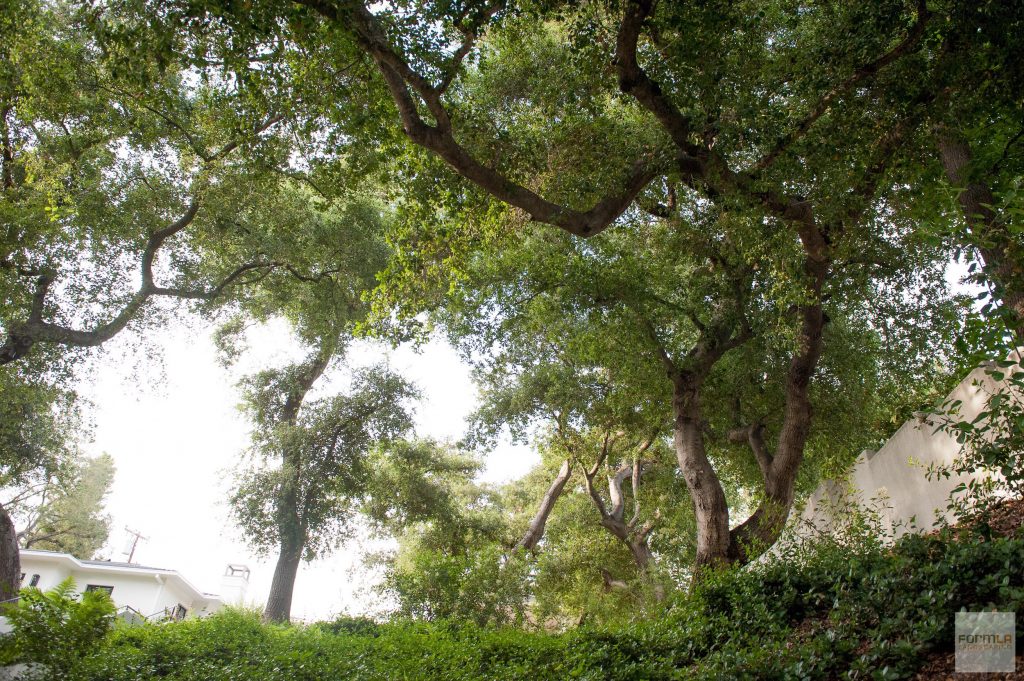Harness Trees to “Catch” Embers Before They Reach Your Home
May 12, 2020. By Cassy Aoyagi: Landscapes can speed or slow fire’s travel to our homes. The creation of treeful spaces is among the 10 firewise actions we can take in our gardens to protect our homes.
Is your head spinning? It happens! We are accustomed to thinking of trees as sources of fire danger. In some cases, it’s true. Palms form fire-bombs. Cypress and Eucalyptus trees also pose dangers, as will any tree that connects to your roof or eves. Yet, the right trees, smartly planted in the right place can protect our homes.
Before we get to what trees to plant where, let’s take a quick look at how they protect us. Most homes ignite from flying embers collecting where they can build heat to ignite a home. Strategically placed trees act as goalies, catching embers before they reach your home.

The Right Place
Now that you know how the process works, you can probably guess a thing or two about the “right place.” The most firewise, protective place for trees is:
- Physically-Distanced: The fully-grown canopy should be a minimum of 10 feet from our homes and structures.
- Power-Free: Ensure distance between full-grown tree canopy and infrastructure, particularly power lines.
- Ladder-Free: Dry foliage and structures like fences can create fuel ladders to our homes.
- Watered: Plan to support trees with supplemental water – maybe a hydrozoned, low-flow, subsurface drip system on a weather based controller – or monthly deep-watering visits with a hose from June-September.
- Strategic: Examination of our home’s placement, topography and prevailing winds can help identify the best places for home protection.
The Right Plant (Tree!)
Once you’ve determined the space(s) you have available and their maximum width and height, this can help guide your selection of the right tree(s). Our native trees have some advantages here, as they are best adapted to our soils and climate. This gives them an advantage in maintaining health and hydration throughout our climate cycle. Our favorite fire catchers include:
- Abundant Space – California Sycamore: Sycamore’s thick hardwood trunks are known to resist fire, and their large, catcher’s mitt sized leaves comprise expansive canopies.
- Ample Space – Coast Live Oak: Oak canopy, dense with small, leathery leaves, is ideal for catching embers. At full size, just one oak may effectively protect a full side of a home. It is also a great shade provider!
- Petite Space – Western Redbud: Known for its architectural branches and delicate, cotton-candy pink blooms, Western Redbud fills with silver-dollar-sized leaves in the spring. Well-hydrated leaves serve as protective catcher’s mitts for embers.
While no plant or tree is fire-proof, these trees, when healthy, hydrated, and properly maintained, can help us protect our homes from flying embers, the most common source of ignition for homes. Want other options? Check out Palo Verde, Manzanita, California Black Walnut, Englemann Oak, and California Bay Laurel.
When we start to, as the National Fire Protection Council advises, stop thinking of homes as homes, and think of homes as fuel, we can orient our minds to the landscape design, building and maintenance actions that protect them. Those key actions include planting trees – an action that has so many additional benefits!
More Information
- National Fire Protection Association: If Your Home Doesn’t Ignite, It Won’t Burn
- National Fire Protection Association: Your Home Can Survive a Wildfire
- KUTV: Fire Wise Plant Choice
- Take 10 Actions, Protect Homes
- Take Action When Fires Are Near
- Fight Fire with Smart Design
- Are You a Fire Fighter?
- Disaster Preventing Plant Palettes
- Disaster Preventing Plant Palettes
- Plant Choice: Angels and Arsonists
- Palm Trees as Fire Hazards
- Combustibility of Landscape Mulches
- TreePeople: 22 Benefits of Trees
